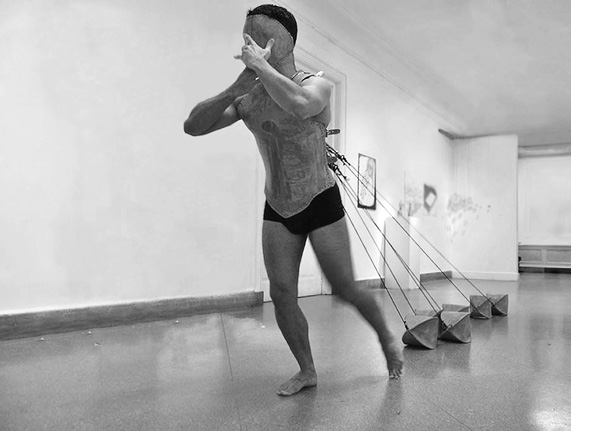
THE HARBINGER
first performed on December 11, 2013
Corcoran College of Art + Design, Washington, DC
performed twice in 2013
LORENZO CARDIM
Washington, DC
300782762l300782762o300782762r300782762e300782762n300782762z300782762o300782762c300782762a300782762r300782762d300782762i300782762m300782762@300782762m300782762e300782762.300782762c300782762o300782762m
lorenzocardim.com
THE HARBINGER
LORENZO CARDIM
I primarily work by exploring philosophical theories, especially those of David Hume. Hume’s theory of causality and human experience heavily influences my creative decisions. Hume argues that each simple idea is derived from an equally simple impression, so that all our ideas are ultimately derived from experience. Like Hume, I believe desire, rather than reason, governs human behavior. I want to provoke the viewer, question their desires, morals and identity—all elements I considered to be crucial in creating one of my latest performances, “The Harbinger.”
The performance highlights the human experience and reflects the human journey through time and space. In this piece, my body moves from one end of a long hall to another. In the beginning of the performance, I use two high-pitched, small hand held percussion instruments that announce my arrival at the performance site. I then rely on the sounds created as my guide. Viewers watching the performance are allowed to add or subtract weights connected to hooks on the back of my leather carapace. Each leather gourd weighs from 8-25 pounds and there are a total of fourteen gourds. The way I move through the space is dictated by the design of the leather carapace. Since I am unable to see or breathe, I have to use my other senses to move. And because I have to stop every so often and move my head backwards to take a breath, it dictates the rhythm and the overall timing of the performance.
The combination of movements used in this piece symbolize the human desire to move forward, no matter what force pulls backwards. It represents the desire to contradict the laws of motion through passion.
In “The Harbinger,” sound and motion function as elements that illustrate the idea of space and time, making the relationship between the sound objects, the leather and the manila rope integral to the work. The symbolic values of the leather, steel and manila rope are not only descriptive of the work, but are also crucial to both its narrative and identity.
My goals are to provoke morals, identities and desires. In “The Harbinger,” my character desires to shed its skin and to move forward, but is pulled back and held down by external forces.